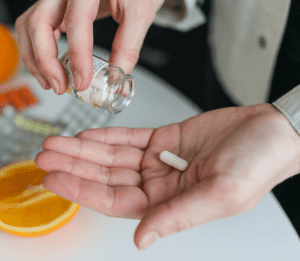Wound treatment is vital in the healing process. Whether you have a wound that is from recent surgery, pressure or dermal ulcer, or injury, choosing the right wound care products and supplies to treat your wound can aid in the time it takes to heal. Not only will the right wound care products help promote faster healing, but they can also help reduce the chances of infection, potential scarring, and help prevent the wound from becoming chronic. Proper wound treatment is essential for healing.
Wound Healing Process
The healing process of a wound follows a series of 4 stages and if any of the stages are interrupted, the wound may fail to properly heal. The 4 stages of normal wound healing include:
- Hemostasis Stage – In this first phase of wound healing happens as the body tries to make the wound site stable and stop any bleeding. In order for that to happen, the blood vessels at the wound site constrict to prevent blood from draining while platelets come together to form a stable clot.

- Inflammatory stage – This defensive second stage allows the body to remove any debris at the wound site and destroy bacteria. Once the blood clot is formed, blood vessels expand to allow maximum blood flow to the wound, which is the reason a wound initially may feel warm and look red. White blood cells enter the wound site and begin to destroy bacteria and other foreign bodies. As this takes place, skin cells multiply, and the tissue repair process begins as a scab is formed.
- Proliferative stage – During the third phase, the goal is to repair the damage that has occurred. New blood vessels begin to form as collagen, a protein fiber starts to grow and fill the wound. The growth of collagen pulls the margins of the wound inward, eventually closing the wound. This new skin at the wound site is then delivered blood by the new small blood vessels that have formed.
- Maturation stage – The final and fourth stage of the wound healing process involves gaining strength in the new tissue as the body continues to add more collagen and refine the wound site. Depending on the wound, this final process may take months or even years. Scars tend to fade with time, which is why long term wound treatment is necessary well after the wound appears to be healed.
Factors That Slow the Wound Healing Process
- Dead Skin Cells – It is important to keep the wound site clean to remove any dead skin cells and debris that can interfere with the wound healing process.
- Infection – If bacteria enters the wound site, infection occurs, and the body fights the infection rather than trying to heal the wound.
- Immobility – If a person is confined to their bed because of immobility, they are more at risk for developing bedsores (also known as pressure sores) because of reduced blood circulation. Treating these types of wounds can be more difficult since they are usually exposed to constant pressure and friction.
- Nutrition – Since the skin is the largest organ of the body, a healthy diet is important to give the body the nutrients it needs to heal the wound, such as vitamin C and protein.
- Medical Conditions – Diabetes, anemia, and some vascular diseases can cause poor blood flow to the wound site, therefore hindering the wound healing process.
- Age – Since everything slows down as we age, wounds tend to take longer to heal. Thinning of the skin makes it more fragile and there is also a decreased inflammatory response in elderly people.

- Medications – Certain medical conditions require specific medications. Some of the medications used in the management of some medical conditions may interfere with one of the necessary stages during the wound healing process.
- Smoking – We know that smoking isn’t good for our overall health, but it impairs the healing process by lowering the level of oxygen in the blood, which is vital for wound healing.
- Skin Dryness – Wounds require a moist environment in order for the skin and immune cells to do their job in the wound healing process. Wounds that are dried out and exposed to air are more at risk for infection and less likely to heal. The body can focus on healing the wound rather than protecting it when it is in a moist environment.
Wound Treatment Tips & Suggestions
Wash Your Hands
Bacteria and debris contribute to infection, so washing your hands with antibacterial soap before ever touching a wound is the first and most important step in the wound treatment process.
Cleaning Your Wound
Before applying any wound care dressing, it is important to carefully clean the site. Not only will cleaning the wound help prevent infection, but it can also speed up the complete healing process. You can follow these simple steps to properly clean a wound:
- Rinse, wash, and remove debris – A variety of wound care cleansers are available to effectively irrigate and wash away any bacteria and debris from the wound site.
- Gently dry and apply an antibiotic – Pat the wound site dry and then opt for one of these wound treatment products that will help maintain the skin’s pH balance and work to prevent infection.
- Apply a wound care dressing – A sterile wound care dressing keeps the wound protected and are offered in a variety of shapes and sizes to accommodate the most irregularly shaped wounds and their locations on the body. Choosing the right wound care dressing can also determine how well your wound heals.
Replace Wound Care Dressings
A wound that is left uncovered and exposed to the air is at greater risk of infection, which can also lead to unnecessary pain because of the dried out cells on the surface. Using a sterile bandage or gauze to cover the wound after cleaning is important, but so is replacing it frequently enough. A wound care dressing should be replaced as often as required to keep the wound leakage from seeping through the dressing.
Stay Hydrated & Eat a Healthy Diet
Hydrated skin is healthy skin and that facilitates the wound healing process. Your body heals most efficiently when it feels its best, so try to maintain a healthy diet. By incorporating foods that are high in protein and Vitamin C into your diet, you may be increasing the wound healing process. There are also nutritional supplements that can be taken as an alternate option for getting those nutrients and their added benefits.
Try a Topical Wound Treatment
 Applying a topical wound treatment can ease some of the pain that is often associated with wounds. A wound treatment product that contains aloe such as Cardinal Health’s Amorphous Hydrogel can help soothe your symptoms. Another great topical wound treatment is the use of honey. MEDIHONEY Products assist the healing process by lowering the pH of wounds, therefore promoting better healing.
Applying a topical wound treatment can ease some of the pain that is often associated with wounds. A wound treatment product that contains aloe such as Cardinal Health’s Amorphous Hydrogel can help soothe your symptoms. Another great topical wound treatment is the use of honey. MEDIHONEY Products assist the healing process by lowering the pH of wounds, therefore promoting better healing.
Compression Therapy
Offered as an effective way to improve blood flow, vascular compression products are often suggested for use by a physician when referring to wound treatment options. Compression therapy can work well for those with venous ulcers to limit swelling around the wound and prevent blood clots, thus speeding up the wound healing process. 
You should always consult with your doctor before purchasing a compression product as there are varying levels of compression that could do more harm than good.
Remember, proper wound treatment is essential for healing. You should always get your doctor’s opinion to determine what the best wound treatment plan is for your specific needs. If your wound is considerably deep or shows signs of serious infection, don’t attempt your wound treatment on your own.
You can get the wound care products and supplies delivered right to your door when you place your order with us. Even better, you can save 5% on your orders when you opt-in to our automatic delivery option. There is no commitment, and you can cancel at any time. Just choose the frequency you would like your wound care products to arrive, and we will take care of the rest.
For any questions about the wide array of wound care products we offer, we are just a phone call away. One of our Personally Delivered Product Experts will be happy to speak to you.

